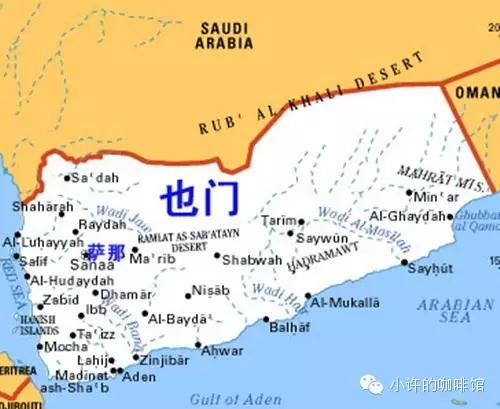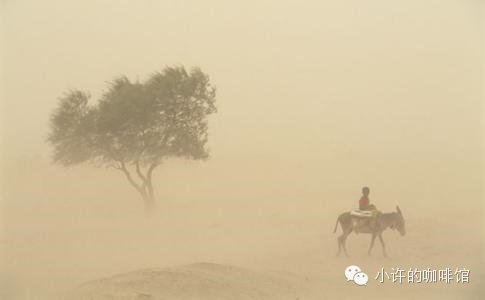Take you to the ancient country of coffee-mocha

The low profile of the Yemeni Mocha, just as it is hidden in the countries of West Asia in North Africa, is full of dry Gobi and deserts, which are located along the Red Sea coast but still retain the most complete Arab traditions. Such geography and environment have created a Yemeni mocha with a full personality. The coffee here grows in arid mountains and does not apply any chemical fertilizers or pesticides at all. Some farmers even let the coffee fruit be picked after drying on the trees.
It is also easy to distinguish between Ethiopian mocha and Yemeni mocha: Yemeni coffee was imported from Ethiopia and still retains the same native species as Ethiopia. So later, in order to facilitate the distinction between Yemeni and Ethiopian coffee, the coffee produced in Yemen and Ethiopia were called "Yemeni mocha" and "Ethiopian mocha" respectively. One of the biggest flavors of mocha coffee is its strong chocolate flavor, so later some barista cleverly added cream and chocolate to the coffee-- this is the classic fancy coffee-- the birth of coffee mocha.
The word mocha first emerged in Europe in the 16th and 17th century, because coffee imported from the Arab world was transported from the port of Mocha in Yemen, so at first people used "mocha" as a synonym for coffee, so until the invention of the mocha pot in the 20th century, people took it for granted that this kind of coffee brewing apparatus was called "mocha pot".

Due to low production and less coffee cultivation, Yemeni mocha is becoming more and more popular, and it is difficult to taste authentic Yemeni mocha in ordinary cafes.
The port of Mocha, a landmark that coffee lovers can't get around, is like a book full of vicissitudes.
In addition to coffee, there is a special coffee drink in this coffee country: Qishr, which is called ginger coffee in Chinese. It is a drink made from dried coffee peel, sometimes with cinnamon, sugar, ginger slices and so on.
Let's talk about the real country of Mocha-Yemen.
That tree, as one family said, is mostly unpopular in other producing areas, but it is fruitful in Yemen, with weak branches and withered leaves and few fresh fruit. The geographical environment of Yemen is not very superior, in the Arabian Peninsula, deserts, droughts and storms are another kind of scenery, not just the verdant shade of coffee trees, full of desolation and distance, and then think of the green, energetic and warm coffee coming out there. the red fruit is full of sweetness, as if there is no fragrance of Yemeni coffee across the screen.

What is most fascinating is the sky, the mountains, and the city that looks like an independent city. Coffee producing areas all over the equator, more scenic beauty, the vast sky, continuous mountains, old city deeply imprinted on the heart.
Important Notice :
前街咖啡 FrontStreet Coffee has moved to new addredd:
FrontStreet Coffee Address: 315,Donghua East Road,GuangZhou
Tel:020 38364473
- Prev

Luxury in Coffee-- the Great Secret of Kopi Luwak
The luxury goods in coffee: Kopi Luwak! Kopi Luwak, a kind of coffee made from beans excreted by civets, is also the most expensive coffee in the world, with a price as high as a few hundred dollars per pound, that is to say, Kopi Luwak with less than 200 yuan in China can basically be sentenced to death. So, whether it should or is it worth paying for two pieces of Grandpa hair for a cup of cat?
- Next

Eight misconceptions about Coffee Coffee is dehydrating?
Misunderstanding 1. There is some truth to the saying that coffee can be addictive, but it depends on your understanding of addiction. For the central nervous system, coffee is an irritant, often drink coffee, the body can have a slight dependence on it. But coffee is not as harmful to physical and mental health as other addictive drugs. But if you suddenly stop drinking coffee, there may be
Related
- Detailed explanation of Jadeite planting Land in Panamanian Jadeite Manor introduction to the grading system of Jadeite competitive bidding, Red bid, Green bid and Rose Summer
- Story of Coffee planting in Brenka region of Costa Rica Stonehenge Manor anaerobic heavy honey treatment of flavor mouth
- What's on the barrel of Blue Mountain Coffee beans?
- Can American coffee also pull flowers? How to use hot American style to pull out a good-looking pattern?
- Can you make a cold extract with coffee beans? What is the right proportion for cold-extracted coffee formula?
- Indonesian PWN Gold Mandrine Coffee Origin Features Flavor How to Chong? Mandolin coffee is American.
- A brief introduction to the flavor characteristics of Brazilian yellow bourbon coffee beans
- What is the effect of different water quality on the flavor of cold-extracted coffee? What kind of water is best for brewing coffee?
- Why do you think of Rose Summer whenever you mention Panamanian coffee?
- Introduction to the characteristics of authentic blue mountain coffee bean producing areas? What is the CIB Coffee Authority in Jamaica?

